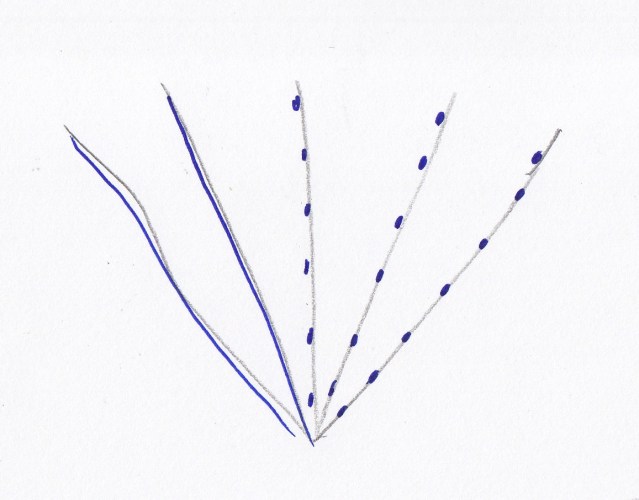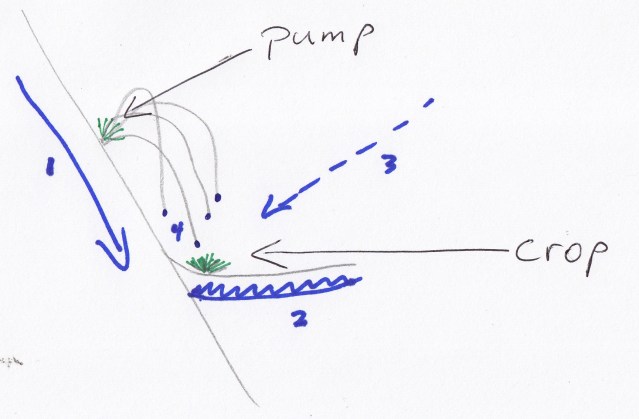We had an inspiring discussion in Kelowna the other night. https://okanaganokanogan.wordpress.com/wp-admin/post.php?post=35870&action=edit
One of the things that came out of it was a conversation on the work being done to bring back the threatened languages of the grasslands. Much work stands before us, and I drove home in the dark thinking that perhaps one way that those of us neither syilx nor secwepemc can contribute to this vital rebuilding is to advocate for adequate resources and funding for it. Another, however, might be to build public support for it in terms that a technological civilization, and its technological universities, can readily and quickly get behind financially and at heart. What follows is an example of my thinking in this regard: an adaptation of the beautiful ecological balance of blue bunch wheatgrass to technological solutions, on the foundation that understanding the grass requires a knowledge of the relationships within the grassland, which are capturable from very close observation and even more deeply understood through indigenous language. I’m not saying that rebuilding languages should be done for technological reasons. I’m merely pointing out that public support is required for any large expenditure and that building up technological interest might be a way to drive a desire for the salvation and growth of these languages and their ancient repositories of families and their deep wisdom. Plus, the technological solutions should be able to build up a right relationship with indigenous grasslands, that corrects the capital-ownership model inherited from colonial times, and its costs in grassland and social deterioration. Such a strategy wouldn’t be isolated from other strategies. The bottom line is that this work must succeed. In a spirit of inquiry and support, I offer a few thoughts below.
Wheatgrass water collectors.
Wheatgrass offers models for aerial water collectors using thin sprung wires, tubes or fibres tipped with water-collecting combs harvesting rain, snow and fog. The mechanism deposits water through weighted tips to non-evaporative, subsoil fibres or mats, or down the wires or tubes to central cores. In both methods, the combs at the tips of the grass stalks hold water in place due to capillary tension and release it when they knock together in the wind or when disturbed by passing deer.

Blue Bunch Wheatgrass Directing Water to the Tips of its Root System.
The harvest of water stored in the plants’ fibrous root system is powered by solar evaporation, which uses thin tubes to draw water vertically by means of its natural capillary tension. Adaptations and extensions of this technology could be used to create scalable and linkable collection stations to sculpt and harvest water regimes. Volumes would be low for each plant, but ample for many uses, especially when linked millions of times in series. Possibilities exist for drip line systems to move water to required zones for crop growth or collection in ditch networks mimicking deer trails, water transfer through microtubes, solar pumping models, and much more. In all cases, models can be created through organic planting or extensions of principles through mechanical engineering.

Blue Bunch Wheatgrass
Power Sources: Sun, Atmospheric Pressure, Molecular bonds, Atmospheric disturbance, gravity, mechanical disturbance.

Figure 1. Components
Atmospheric collectors (top), fibrous storage (bottom), solar pump system (centre).

Figure 2. Stalk Transfer Mechanisms
In-tube transfer (left), surface transfer (right).

Figure 3. Gravity Transfer Mechanism
Combs at fibre tips collect snow, rain or fog, transform it to water and deposit it on the storage mechanism below. The combs resist atmospheric theft, delay transfer to prevent overcharging of storage fibres, and hold water as ice during freezing cycles to extend water harvest over time for continuous running of the system.

Figure 4. Mechanical Transfer
Weighted fibres planted on a slope transfer water to a downslope collector.

Figure 5. Multiple Capture Mechanisms
1Subsoil water moving by gravity is slowed by pumps before being deposited in 2holding ponds of subsoil water, which is augmented by 3precipitation and 4gravity fed water. This mechanisms allows a crop rooted in region 2 to have four water sources.

Figure 6. Integrated Pumping and Storage Nets
Fiber collectors and pumps on a slope (left) are interspersed with bulb collectors (See following entry.) and deliver water down slope to bulb (and tuber) collectors. In an organic model, on-slope bulb collectors (see entry below) can seed those on the horizontal plane below, which can be harvested for food or water. In a mechanical model, all bulb and tuber collectors can be used as micro-storage and harvested in series or through mechanical collection.
I have at least a hundred other ideas to sketch out like this, a great need to actually learn how to sketch in a comprehensible way (thanks for your patience), and all of them to work out in detail against the background of western physics, chemistry and biology. Linking these hypotheses to the knowledge within indigenous grassland languages and culture would form part of a complete approach. The ultimate goal is restoration of right relationships with the grass and all of its creatures, and the restoration of the knowledge, language and culture of its people. I think we can do this. I know we have to try, with all that we have.
Categories: flower gardening, Industry, landscaping














Your frequent refrain about believing we must try to restore indigenous knowledge and right relationships with the land is so important, and heartening to hear. Though I didn’t follow this discussion in all the detail it warrants, I get the gist, and it’s wonderful to see how you bring disparate (or seemingly so) disciplines and knowledge bases together to make something new. Your sketches are excellent, BTW – they are very clear. Your use of color really helps clarify the concept, too. Also, it always pleases me to hear you talk about the importance of restoring the language. And I have to add, your own ability in close observation continually inspires. 🙂
LikeLike
Thanks! I need to find the time to make a longer post about some of these things. Perhaps that will happen next week. Your support is heartening. Blessings.
>
LikeLike